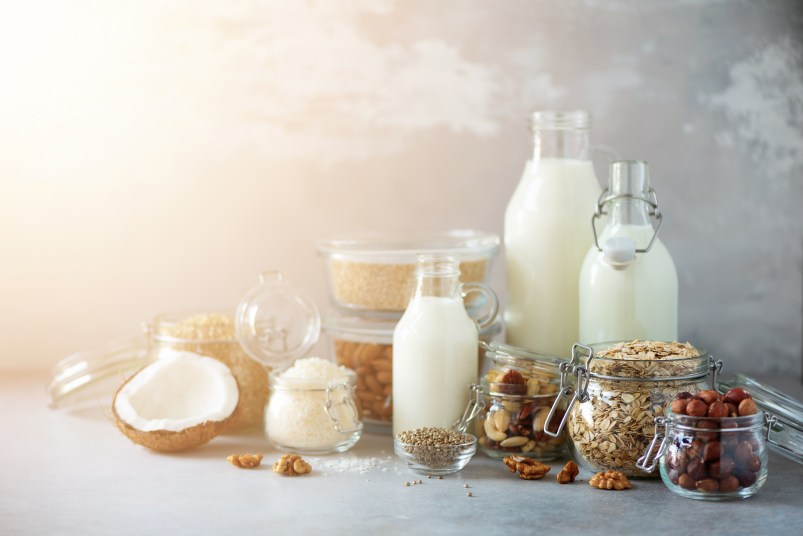Giving up Dairy? Here’s How to Do It (and Still Treat Yourself)
It's easier than ever.

Not long ago, I decided to give up dairy (for the most part). And while I still indulge in a piece of chocolate here and there, letting go of dairy has had some major benefits. It cleared up my skin, I’ve had less digestive trouble, less brain fog, and more energy! But even though it’s done me a lot of good, giving up my favorite dairy foods (hello, cheese!) wasn’t totally easy. So if you’re trying to do the same, read on for the benefits of giving up milk, how you should alter the rest of your diet, and how to make saying goodbye to ice cream that much less painful.
Whether you have a full-on dairy allergy, are sensitive to dairy, or you’re trying a specific dairy-free diet, giving it up has become a popular way to get healthier. Many argue that it simply isn’t natural for humans to consume cow’s milk based on the fact that humans are the only species that consumes milk from another type of animal. In fact, dairy consumption only became widespread after the agricultural revolution in the early 19th century in Europe, when we started to mass-produce crops and animal products. Many studies have also concluded that dairy products (especially those from grain-fed cows) can contribute to chronic health conditions like heart disease and certain types of cancer. On top of all this, it’s said that at least 65 percent of the human population has a reduced ability to digest lactose, the sugar found in dairy products. That’s a lot of people!
Regardless of your take on whether milk is healthy or not, it does contain nutrients like calcium, vitamin D, and protein. Consuming less calcium can weaken your bones. Not getting enough vitamin D can cause fatigue, brain fog, depression, and even hair loss. While lack of protein can weaken muscles, increase hunger and cravings, and cause loss of energy. So if you’re excluding dairy and processed dairy products like cheese from your diet (like many weight-loss diets do), you’ll need to find other ways to get these nutrients.
To supplement calcium, try adding in other calcium-rich foods like sardines, collard greens, white beans, almonds, and sesame seeds. Dairy-alternative nut milks like almond milk are often fortified with calcium and vitamin D as well, so be sure to check your labels to see how much you’re getting. To get more protein in your diet, focus on lean sources like eggs, lean meats, nuts and seeds, beans and legumes like lentils, and grains like quinoa and brown rice. Taking a vitamin D supplement (like this one from Life Extension; $7.40, Amazon) isn’t a bad idea either — just be sure you get your doctor’s OK first.
Now onto the harder part. If you’re a huge cheese or ice cream fan like myself, giving up dairy can be a real challenge. However, these days it’s easier than ever to find dairy-free alternatives for some of your favorite comfort foods at your local grocery store. Swap regular butter for healthier oils like olive oil or coconut oil. If you’re in need of a glass of milk with your desert, check the refrigerated aisle for flavored and unflavored choices like cashew milk, coconut milk, soy milk, almond milk, and oat milk. Dairy-free coffee creamers and cheeses will be found in the same section.
The same goes for frozen dairy products. There, you’ll find ice creams made from coconut milk, soy milk, and cashew milk which will satisfy your craving for a creamy sweet treat. Did you know that even Ben and Jerry’s makes dairy-free ice cream?
So there you have it. Going dairy-free might initially feel like a challenge, but with so many other choices out there, it’s easier than ever to make the switch. We’re wishing you the best of luck with this lifestyle change!
















